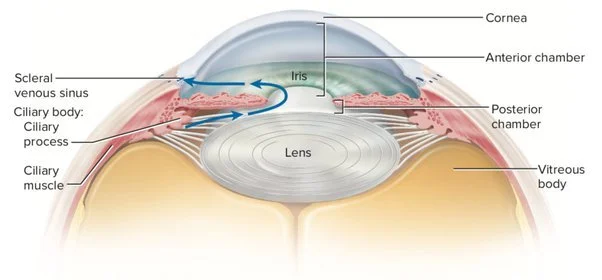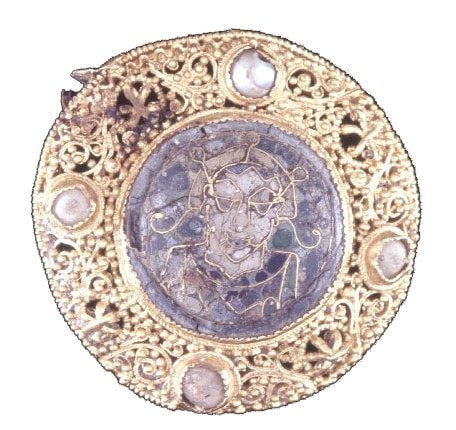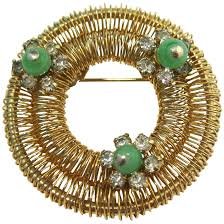Before reading any of my blog posts it is important to have already seen The Revelation Of Jesus Christ Documentary. Without this foundation of knowledge, you will not be able to understand the concepts I will be explaining in these teachings. After watching, I would recommend beginning at the oldest blog and working toward the most recent. New posts typically build upon the previous ones.
In this post I will begin to explain some things about the temple, and the priest’s garments with the ephod, which is shown throughout the Old Testament. Our main focus will be upon what the onyx stones of Exodus are in reference to, and how these stones relate to my previous teachings. However, in my next blog I will use these descriptions to show you how to differentiate the twelve tribes just by looking into someone’s eyes. Each verse of the temple is extremely detailed, so I will only expound a small portion of Exodus 28, but with only a handful of verses you will see the depth of the wisdom of God. As a prelude, the scriptures will specifically be speaking about Aaron’s location and purpose toward the temple, and Aaron is a Levite, meaning his ‘tribe’ is tasked with ministering the word of God.
In order to properly explain all the colors and illustrations that we will encounter, I must start with the end conclusion, then prove it further on. You will often see Aaron associated with a rod throughout the bible, such as in Exodus 7 which says,
12 For they cast down every man his rod, and they became serpents: but Aaron's rod swallowed up their rods.
Notice how the bible states that every man has his own rod, and when they are cast to the ground (meaning separated from the body), they become serpents. The ‘rods’ in these verses are in reference to the eyes because each eye contains cylindrical shaped photoreceptor cells, responsible for vision in the retina. These cells are called “rod cells” and are concentrated on the outer edges (‘outer darkness’) of the retina and function best as a visual receptor in low light environments (symbolic of Egypt being a land of darkness). All aligning with the teachings I have been providing, such as The Kingdom of God page, which I explained how the eye is one of the images of a serpent.
Now beginning with Exodus 28:6-9 the bible states,
6 And they shall make the ephod of gold, of blue, and of purple, of scarlet, and fine twined linen, with cunning work.
7 It shall have the two shoulderpieces thereof joined at the two edges thereof; and so it shall be joined together.
8 And the curious girdle of the ephod, which is upon it, shall be of the same, according to the work thereof; even of gold, of blue, and purple, and scarlet, and fine twined linen.
9 And thou shalt take two onyx stones, and grave on them the names of the children of Israel:
In these verses we see the term ephod, which is used to describe a type of garment, pertaining to the layers of the eye. The colors of the ephod are blue, purple, scarlet, with fine twined linen, which essentially means it contains threads that are wound together. Below, I will expound upon this by showing you images of retinal cells, how they look under a microscope, and a diagram of the eye. Additionally, it says that the ephod has ‘two shoulderpieces’ that are joined at the edges, and you will see how the anatomy of the shoulder muscles, when connecting to the rotator cuff, relates to how the inner eye is intertwined.
The bible also says that the ephod contains a ‘curious girdle’, and a ‘girdle’ in bodily anatomy is the location in which two body parts are attached. Therefore, the object of the girdle, or the thing that the girdle is holding, is what is being called “curious”. To understand this term, we will read Acts 19 which says,
19 Many of them also which used curious arts brought their books together, and burned them before all men: and they counted the price of them, and found it fifty thousand pieces of silver.
Notice how this verse is describing people who burned their books of ‘curious arts’ after they believe, concluding that the word “curious”, can also be described as ‘dark’ (like “dark arts”, or “black magic”). This aligns with the fact that we see two ‘onyx stones’ is because you have two eyes that each contain a black pupil, which resembles an onyx stone.
ciliary process strings = fine twined linen, or “chains of pure gold”
shoulder muscle diagram, relating to one side of the eye
the ciliary muscle is a gold color
mamalian retinal cells (purple, blue, scarlet)
color of iris dilator cells under microscope
cornea cells in the eye (purple, blue, scarlet)
the shape and color of an onyx stone
PUPIL LOCATION, IRIS is “ENGRAVED UPON SIGNET”
As you can see above, the scriptures of Exodus 28 are an exact representation of the anatomy of an eye. The gold color is describing the tissue of the ciliary muscle (the ‘shoulderpieces’), which when joined to the pupil and iris, forms similar to that of the shoulder muscle to the rotary cuff. The purple, blue, and scarlet color of the ephod, is representing the colors of the retinal, iris dilator, and cornea cells, as seen under a microscope. The ‘fine twined linen’ can be seen in the first image, where the “ciliary processes” connect to the lens. And lastly, the ‘two onyx stones’ located in the “curious girdle” (black object connected to two muscle parts), are a rendition of the shapes and locations of each pupil. I will cover the statement in Exodus 28 that said to ‘grave on them the names of the children of Israel’ in another blog post. But the main take-away from that verse is that upon the pupil there is something that gets “engraved”, just as you see the iris portion of the eye being engraved with a specific eye color.
We will proceed to the next four verses of Exodus 28, but just remember that I am saving the deeper meaning of the ‘twelve tribes’ and their ‘names’ for another next post. Continuing Exodus 28 says,
10 Six of their names on one stone, and the other six names of the rest on the other stone, according to their birth.
11 With the work of an engraver in stone, like the engravings of a signet, shalt thou engrave the two stones with the names of the children of Israel: thou shalt make them to be set in ouches of gold.
12 And thou shalt put the two stones upon the shoulders of the ephod for stones of memorial unto the children of Israel: and Aaron shall bear their names before the LORD upon his two shoulders for a memorial.
13 And thou shalt make ouches of gold;
14 And two chains of pure gold at the ends; of wreathen work shalt thou make them, and fasten the wreathen chains to the ouches.
Without explaining the names, we see that the work of the engraver upon the stone is ‘like the engravings of a signet’. If you do not know what a signet is, it is like a ring, or a stamp, which typically has a specific design that can be pressed with ink or wax to leave a signature mark. You will sometimes see this in movies depicting kings, they will take some wax upon their ring, and stamp it upon a letter to let the receiver know it was sealed personally by that particular person. That is why everyone’s eyes are unique, and can be used with “iris recognition technology” as a non-intrusive method of biometric identification.
The term ‘ouches’ is the location in which the signet sits, meaning the engraved stone is placed into a gold ring, or in this case, the golden pouch of the ciliary muscles. The ‘two chains of pure gold’ are the two connecting points of the iris shown above, which is fastened to the ciliary muscles like the pupil is fastened. The wreathen work is different than the fine twined linen, because it is describing the structure of the iris, which looks like two wreath woven together (the iris dilator muscle and the iris sphincter muscle which surround the pupil). In the images below, you can see all the relationships between this narration.
An example of an “ouch of gold”
what “wreathen work” looks like
the “engravings” of the eye
PUPIL LAYOUT, MATCHING SHOULDER anatomy. connected by “two chains”
up-close image of the iris & pupil
the structure of the iris & pupil
wreathen work set in ouches of gold
The purpose of all the depictions of ‘garments’ throughout the bible, is to show you how each part of the body is clothed, and how it relates to their specific function. In this example, it relates to the function of Aaron, because Aaron is representing a Levite who ministers to me personally, seeing “eye to eye”. And the Levites of the Old Testament held the priests office, meaning they interacted with me or the bible on an personal level. Granted, you saw from Exodus 7, that even the priests and magicians of Pharaoh in Egypt also had rods, which signifies how the “Pharisees” also use their rods (eyes), to look upon the bible. Just as 1 Corinthians 13 states,
12 For now we see through a glass, darkly; but then face to face: now I know in part; but then shall I know even as also I am known.
This verse is again representing the relationship of how the rod cells function in dim light (‘darkly’) through the ‘glass’ of your eye, known as the cornea. Which is an illustration of the Old Testament, how when I preached the law, you seeing me and the bible through a dark glass (not yet using my true name). And in Aaron’s case, this would be someone who was part of my church, and interacted with me in the temple (my mind), who I ordained to watch over the people at that time. It means they knew me in person, and saw how I think and preach, but during the law the bible signified my thoughts on paper.
At that time, I would be like Moses, representing the first Adam (still one with the bible), but under the law. As stated in 2 Corinthians 3,
7 But if the ministration of death, written and engraven in stones, was glorious, so that the children of Israel could not stedfastly behold the face of Moses for the glory of his countenance; which glory was to be done away:
And also, 2 Corinthians 3,
12 Seeing then that we have such hope, we use great plainness of speech:
13 And not as Moses, which put a veil over his face, that the children of Israel could not stedfastly look to the end of that which is abolished:
14 But their minds were blinded: for until this day remaineth the same vail untaken away in the reading of the old testament; which vail is done away in Christ.
As all these verses said, now you see me truly without the vail, meaning you no longer know me ‘in part’, but you see the real me ‘face to face’, being Christ, the last Adam. The same name ‘Adam’ is used because both are me but only one is my true form, the ‘new’ man (testament of faith).
Therefore, the first tribe of the Levites, which included Aaron, and also myself as Moses (Exodus 2, son of a Levite), were the priests who taught out of the law. And throughout Exodus you will see Moses and I, or I and Moses, interacting, which presents the duality of the bible, how I am the image of God, being called the ‘The Word of God’ (the Holy Ghost and I interchangeably speaking to one another in the mind). But in order to signify the change of this priesthood, the ‘new man’, or the last Adam (myself), had to come from a different tribe. As Hebrews 7 says,
15 And it is yet far more evident: for that after the similitude of Melchisedec there ariseth another priest,
16 Who is made, not after the law of a carnal commandment, but after the power of an endless life.
The law is in the physical words, which no man could understand, but the truth is in the power explanation that I provide. It is the same duality (‘Melchizedek’ shown by the Holy Ghost in the OT, vs. the ‘Melchisedec’ I am in the New Testament), but the tribe has changed to the tribe of Judah, which is the Light of the penial gland’s eye (truth, singular, Father and I as one Spirit, the explanation of the words), not the ‘light’ of the two onyx stone eyes (law, plural, Holy Ghost and I face to face, or the literal physical words of the OT & NT).
To conclude, you can see from just a small portion of scripture, God provides an intricate description of each portion of the associated anatomy of the eye. Nevertheless, I could do this with every single verse of the temple throughout the Old Testament describing the body, not just one third of Exodus 28. That is how in depth the bible goes, and which is why I can continually provide massive Revelations in the world to come. But I chose these verses for a specific purpose, which is to give you a foundation for my next teaching on the engravings of the twelve tribes of Israel.
Numbers 14,
14 And they will tell it to the inhabitants of this land: for they have heard that thou Lord art among this people, that thou Lord art seen face to face, and that thy cloud standeth over them, and that thou goest before them, by day time in a pillar of a cloud, and in a pillar of fire by night.














